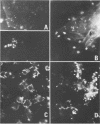Abstract
Factors which influence the attachment of bacterioplankton to particles (including phytoplankton) were investigated by using (i) water samples removed from a coastal temperate fjord over an annual cycle and (ii) unialgal cultures of Prorocentrum minimum, Dunaliella tertiolecta, and Skeletonema costatum. Silt and salinity levels in this fjord seawater did not appear to influence bacterial attachment, but the percent attached bacteria was inversely related to both chlorophyll a concentrations and primary productivities. During periods of high primary productivities the percent attached bacteria was low, whereas during periods of low, increasing, and declining primary productivities the percent attached bacteria was high. A similar pattern of bacterial attachment was observed when the three phytoplankton were grown as batch cultures. The percent attached bacterial numbers increased upon the initiation of algal growth and after these cells stopped growing, but not while the algae were growing. We suggest that a major factor influencing the attachment of bacterioplankton is the physiological condition of their major nutrient source, the phytoplankton; mainly free-living bacteria are associated with growing phytoplankton, whereas a much greater proportion of the bacteria are attached among senescent phytoplankton populations.
Full text
PDF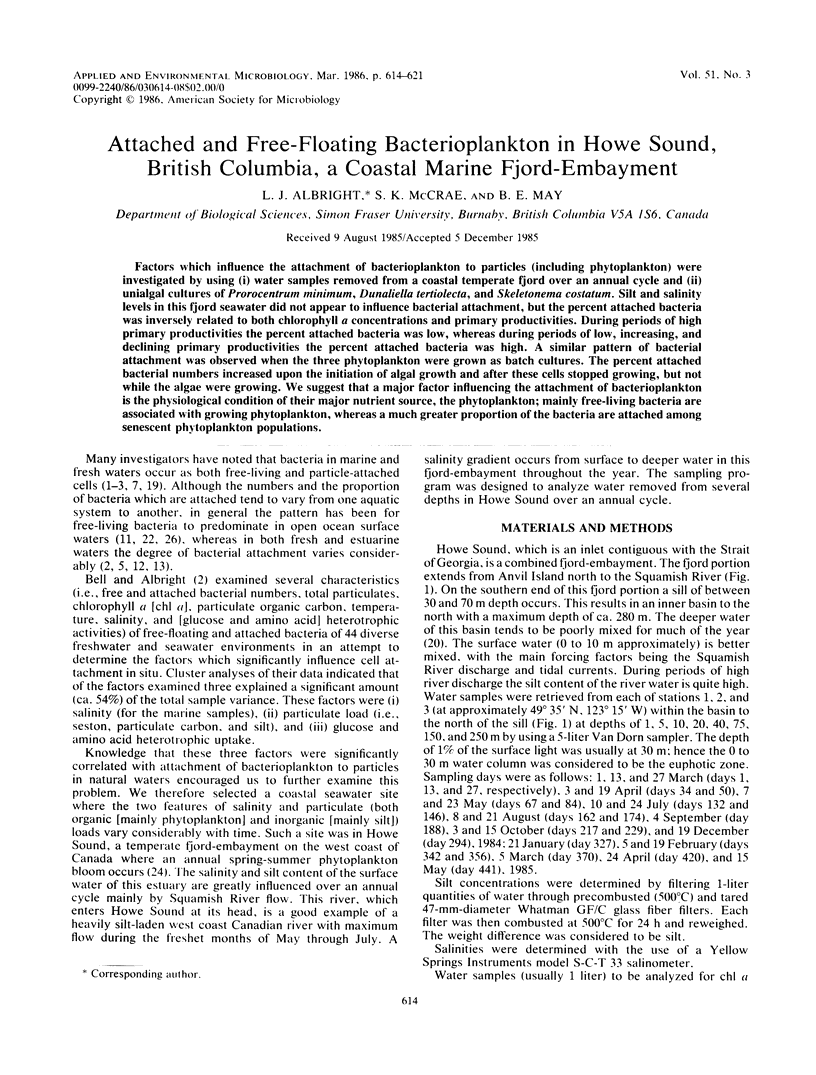
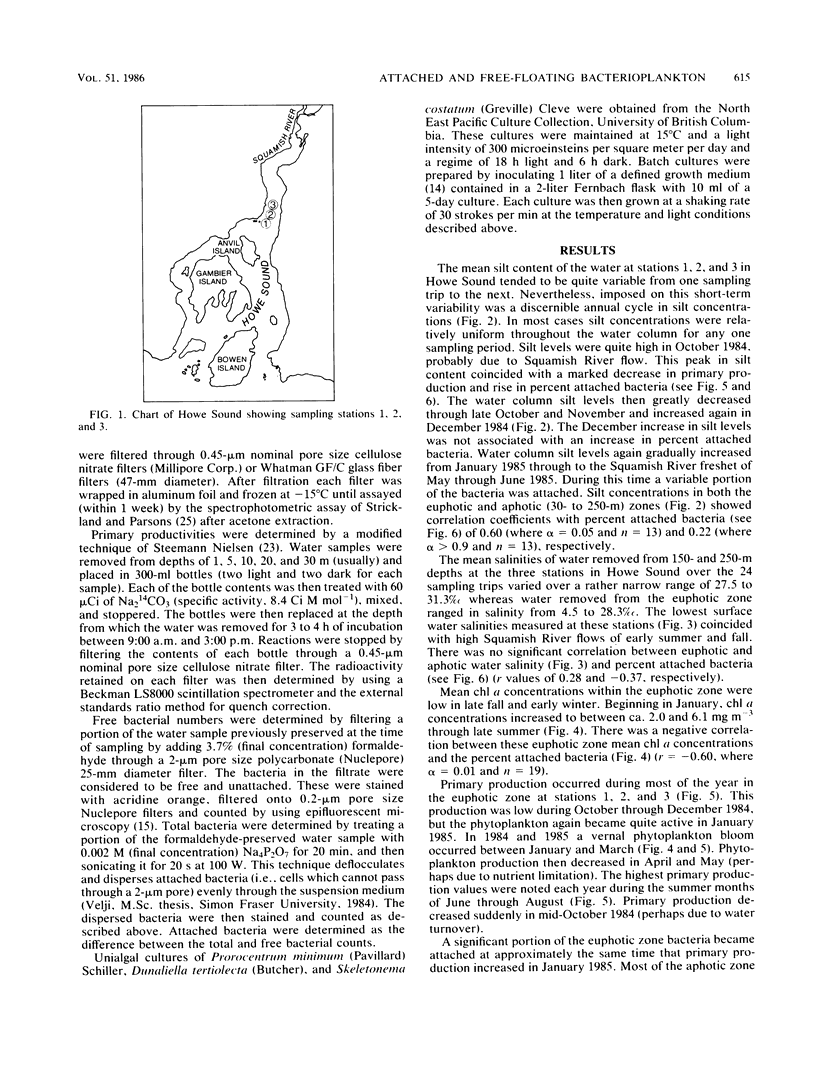
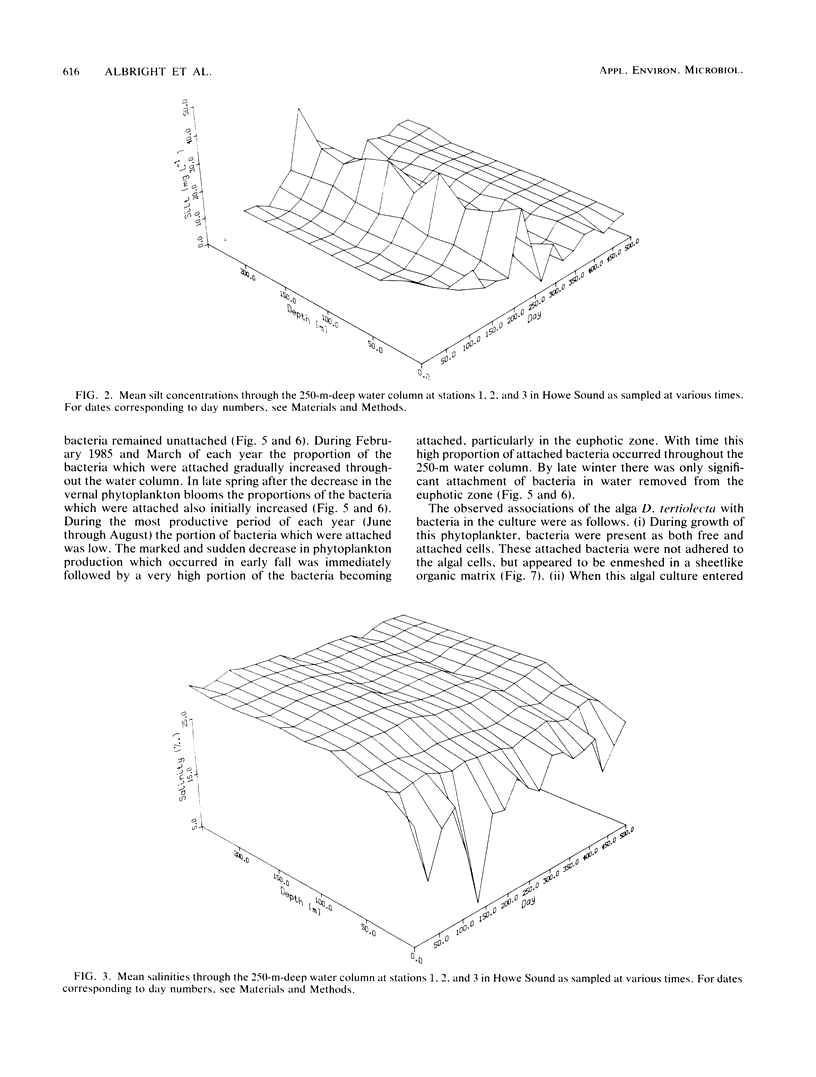

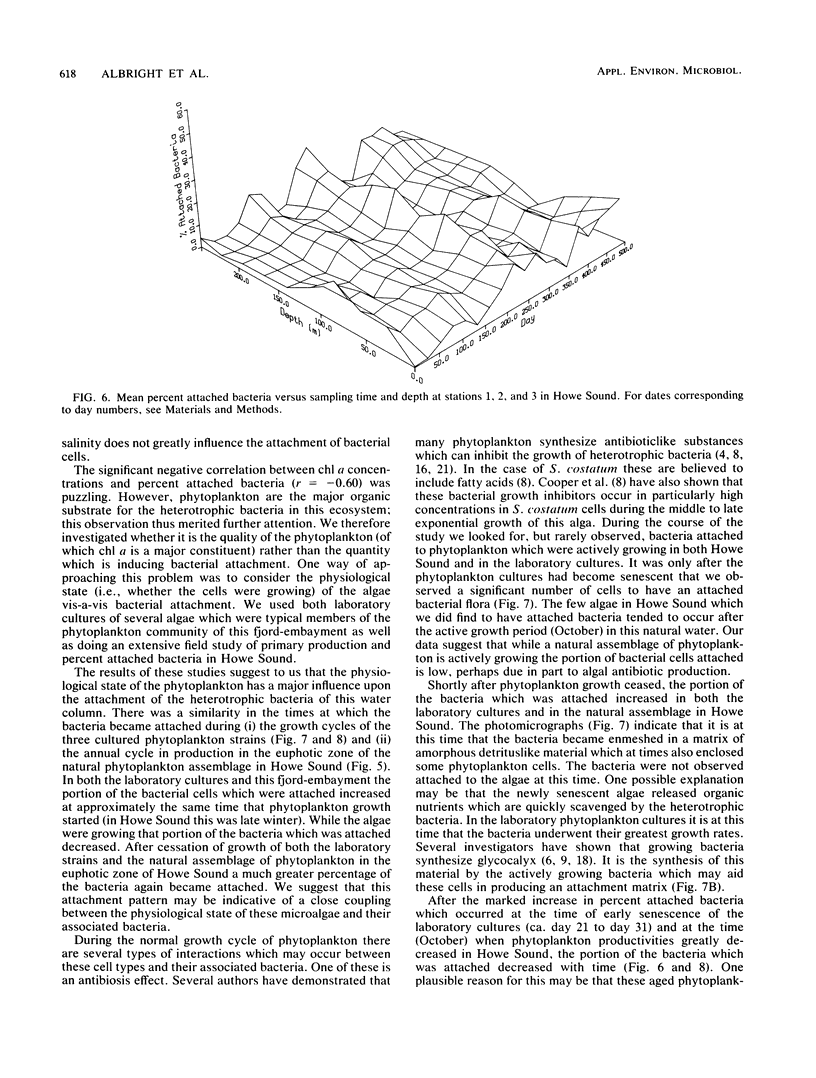
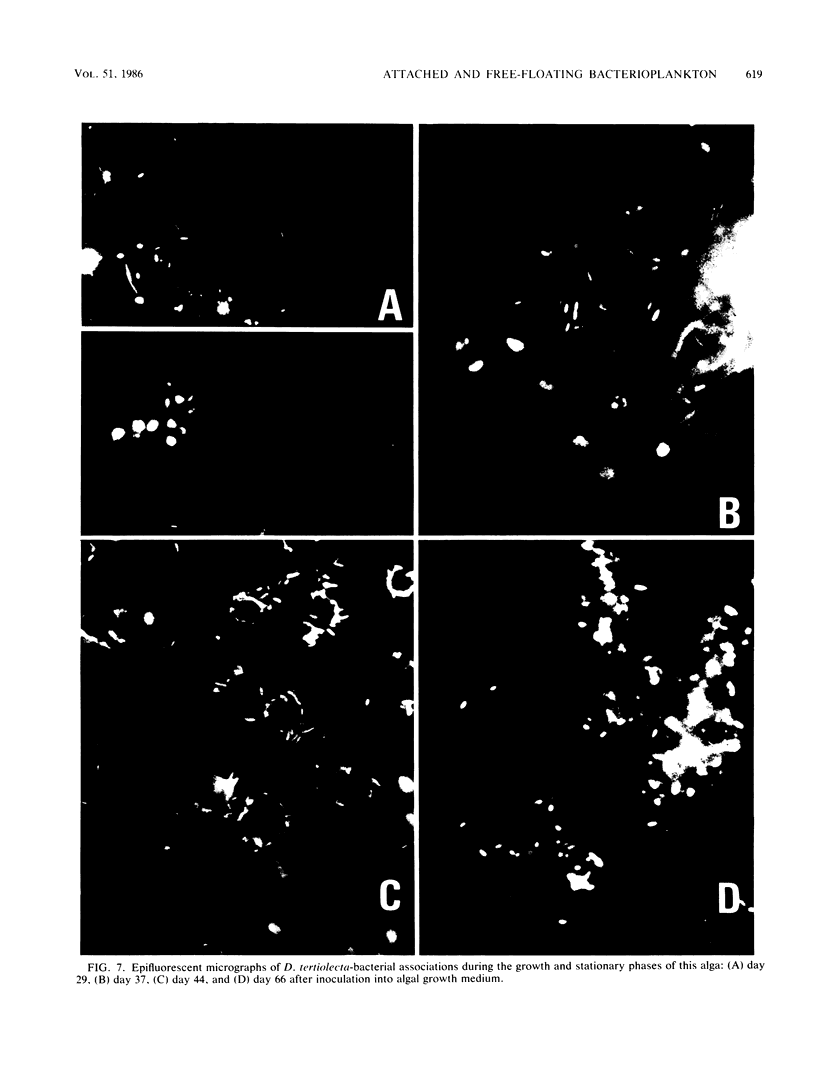
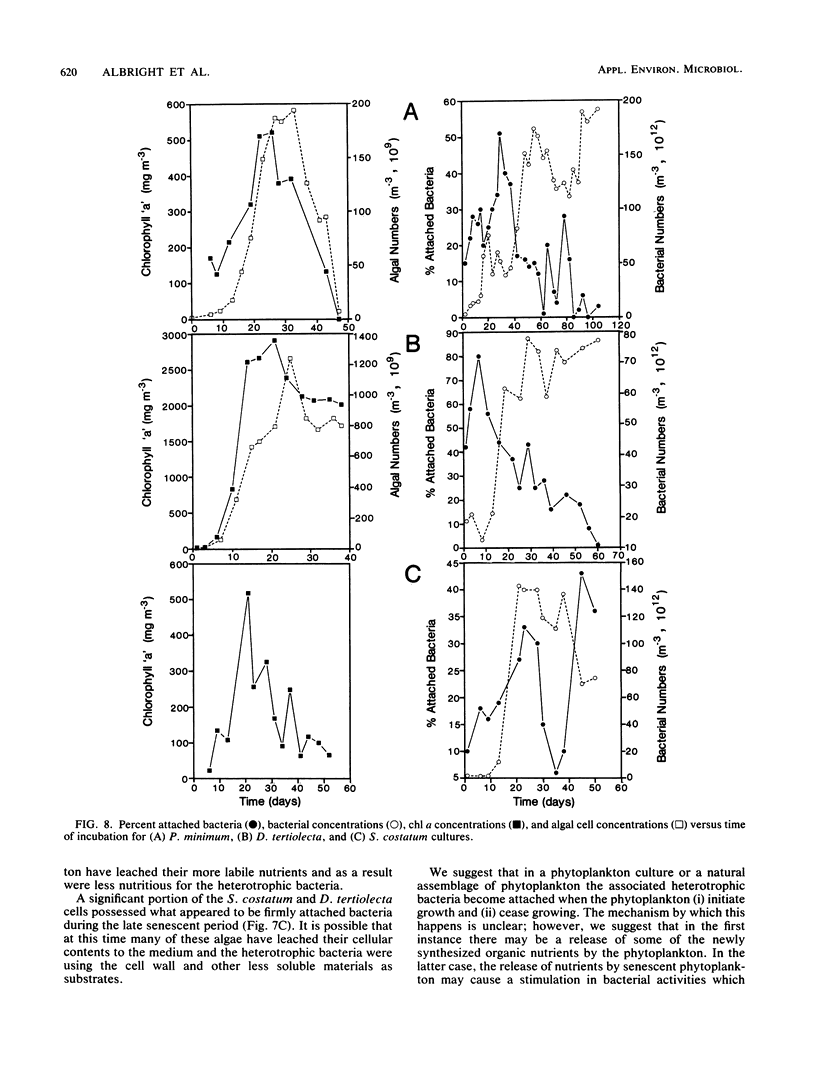
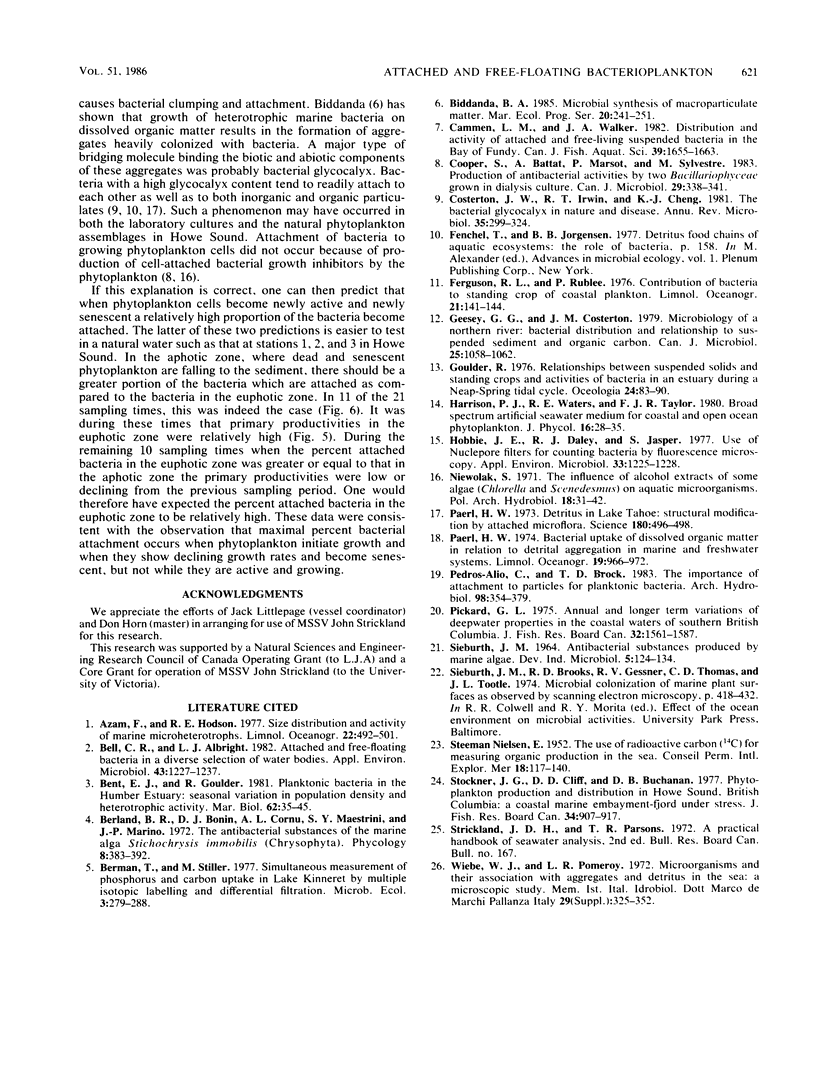
Images in this article
Selected References
These references are in PubMed. This may not be the complete list of references from this article.
- Bell C. R., Albright L. J. Attached and free-floating bacteria in a diverse selection of water bodies. Appl Environ Microbiol. 1982 Jun;43(6):1227–1237. doi: 10.1128/aem.43.6.1227-1237.1982. [DOI] [PMC free article] [PubMed] [Google Scholar]
- Costerton J. W., Irvin R. T., Cheng K. J. The bacterial glycocalyx in nature and disease. Annu Rev Microbiol. 1981;35:299–324. doi: 10.1146/annurev.mi.35.100181.001503. [DOI] [PubMed] [Google Scholar]
- Geesey G. G., Costerton J. W. Microbiology of a northern river: bacterial distribution and relationship to suspended sediment and organic carbon. Can J Microbiol. 1979 Sep;25(9):1058–1062. doi: 10.1139/m79-162. [DOI] [PubMed] [Google Scholar]
- Hobbie J. E., Daley R. J., Jasper S. Use of nuclepore filters for counting bacteria by fluorescence microscopy. Appl Environ Microbiol. 1977 May;33(5):1225–1228. doi: 10.1128/aem.33.5.1225-1228.1977. [DOI] [PMC free article] [PubMed] [Google Scholar]
- Paerl H. W. Detritus in lake tahoe: structural modification by attached microflora. Science. 1973 May 4;180(4085):496–498. doi: 10.1126/science.180.4085.496. [DOI] [PubMed] [Google Scholar]



